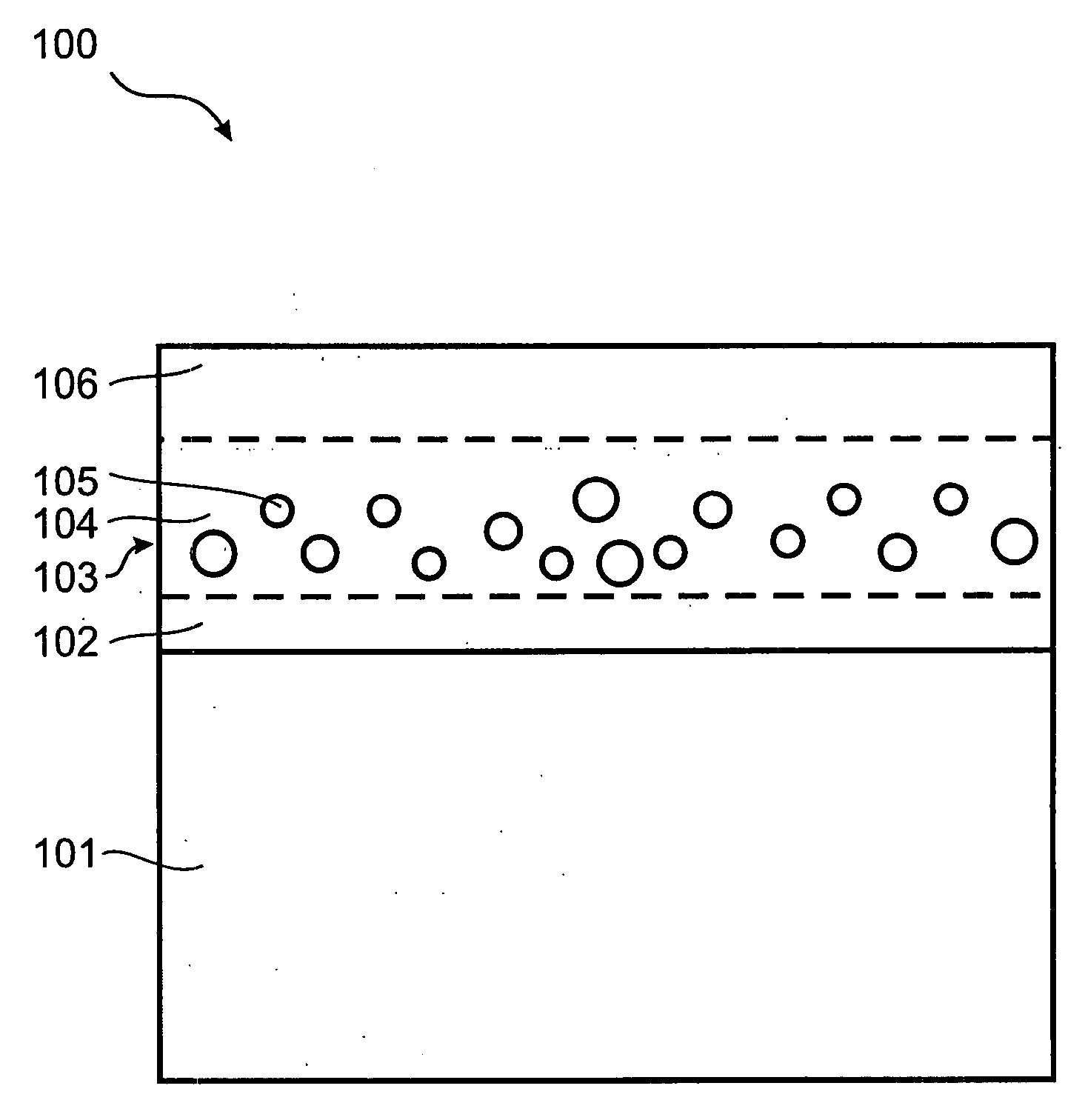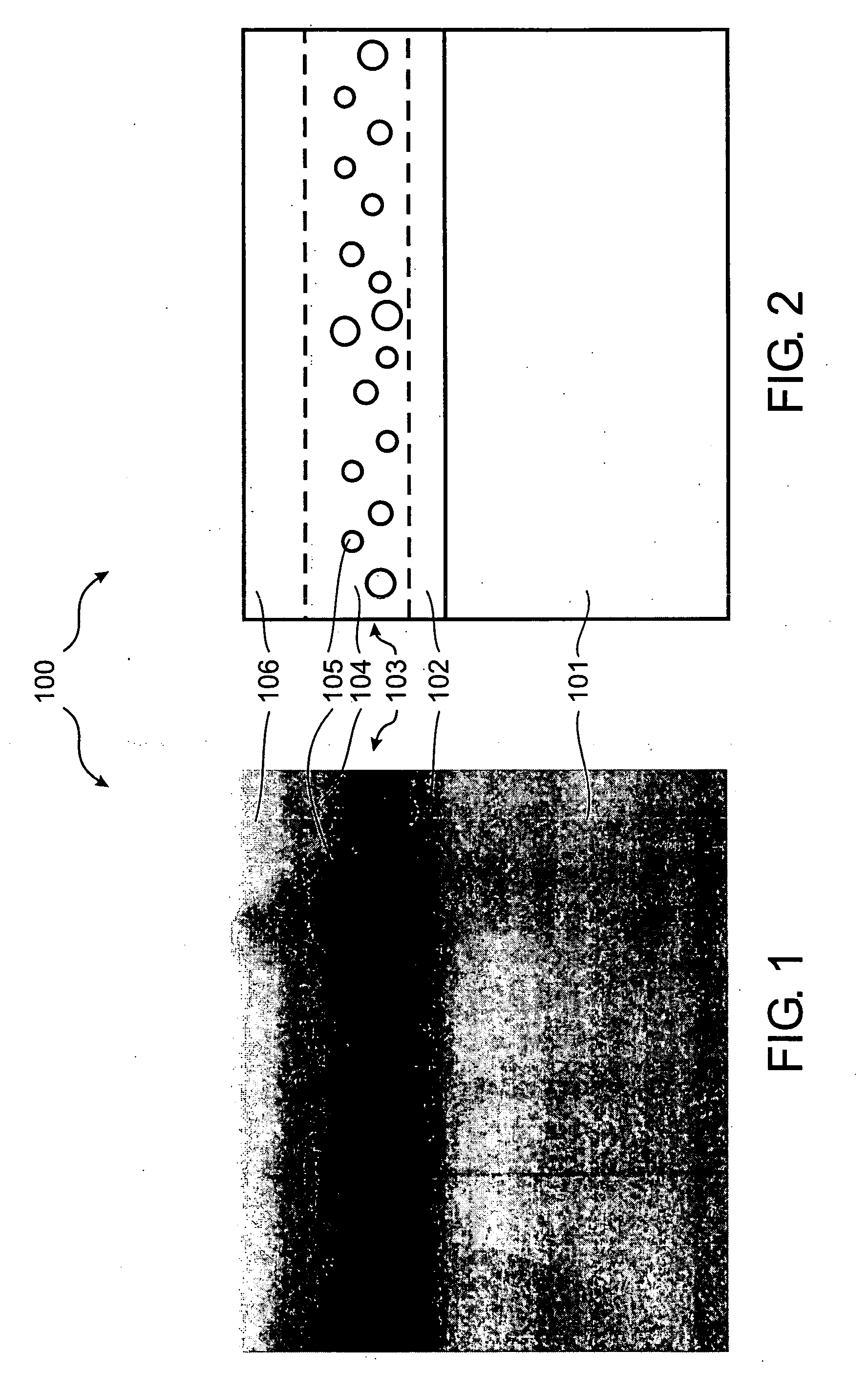Condensed materials
a technology of oxide films and condensed materials, applied in the direction of fixed capacitors, liquid/solution decomposition chemical coatings, transportation and packaging, etc., can solve the problems of paper not considering ge nanodot formation in thin films, typically requires technical sophistication equipment, and reduces the peak temperature of heat treatment, preventing unwanted electron flow, and shortening the duration of heat treatmen
- Summary
- Abstract
- Description
- Claims
- Application Information
AI Technical Summary
Benefits of technology
Problems solved by technology
Method used
Image
Examples
example 2
[0041]Tetraethoxysilane, germaniumtetraethoxide Ge(OC2H5)4, ethanol, diethoxydimethylsilane (CH3)2Si(OC2H5)2, hydrochloric acid (HCl), and highly purified water were used here as starting materials.
[0042]The diethoxydimethylsilane was diluted with ethanol. Then it was hydrolyzed with water and hydrochloric acid for several hours. The hydrolysis was done under continuous stirring in a closed bottle at 5° C. Afterwards a part of the solution described above and water were added to a solution consisting of tetraethoxysilane, germaniumtetraethoxide and ethanol. This new solution was aged for several hours under the same conditions that were applied for the hydrolysis of diethoxydimethylsilane as described above. Slices of silicon wafers were dip coated with this solution. The thermal treatment was the same as used in example
[0043]1. The presence of hydrolyzed diethoxydimethylsilane lowers the condensation rate of hydrolyzed germaniumtetraethoxide. Without this additive the solutions con...
PUM
| Property | Measurement | Unit |
|---|---|---|
| thickness | aaaaa | aaaaa |
| thickness | aaaaa | aaaaa |
| temperatures | aaaaa | aaaaa |
Abstract
Description
Claims
Application Information
 Login to View More
Login to View More - R&D
- Intellectual Property
- Life Sciences
- Materials
- Tech Scout
- Unparalleled Data Quality
- Higher Quality Content
- 60% Fewer Hallucinations
Browse by: Latest US Patents, China's latest patents, Technical Efficacy Thesaurus, Application Domain, Technology Topic, Popular Technical Reports.
© 2025 PatSnap. All rights reserved.Legal|Privacy policy|Modern Slavery Act Transparency Statement|Sitemap|About US| Contact US: help@patsnap.com


